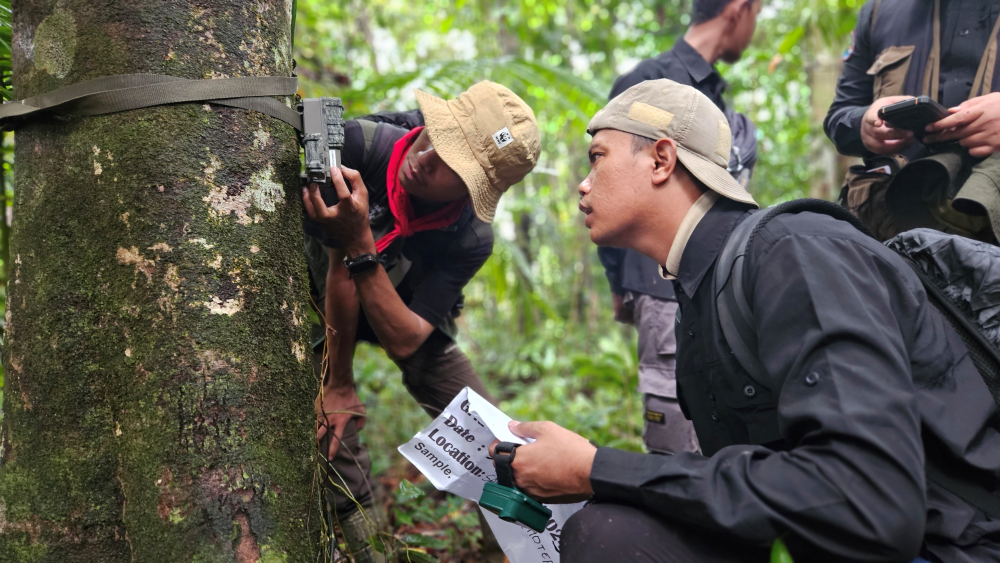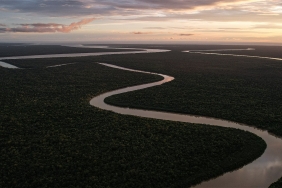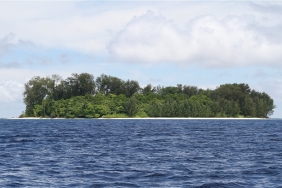PAM AND CAMERA TRAP: DRIVING TECHNOLOGICAL ADVANCES IN PAPUA’S NATURE CONSERVATION
Amidst the growing spirit of nature conservation, an important step has been taken in the Land of Papua. WWF Indonesia Foundation and the Papua Natural Resources Conservation Center (BBKSDA) officially collaborated through the signing of a memorandum of understanding on Strengthening Area Functions and Biodiversity Conservation in the Working Area of the Papua Natural Resources Conservation Center. This collaboration is not just symbolic, but the starting point of a joint journey to preserve Papua's extraordinary biodiversity. As a tangible manifestation of this partnership, the two institutions held a Knowledge Sharing event on the use of Passive Acoustic Monitoring (PAM) and Camera Trap (CT) methods in supporting conservation. This technology allows researchers and conservation area managers to "hear" and "see" wildlife without disturbing their habitat, an approach that is increasingly relevant in the modern era. This activity took place in two different locations, namely the WWF Papua Program Office and Hotep Sawe Suma, from June 23-26, 2025.
This activity was designed to equip participants with technical skills in biodiversity data collection using two main methods: Camera Trap and Passive Acoustic Monitoring (PAM). These two technologies are important tools in supporting the implementation of biodiversity surveys in the agreed working areas, while strengthening efforts to conserve Papua's rich and unique nature."
A total of 30 participants were actively involved in this activity, consisting of Civil Servant Candidates of the Ministry of Forestry, BBKSDA Papua staff, and a team from WWF Indonesia Papua Program. They came with a passion to learn and share, bringing together experiences and knowledge to achieve a common goal.
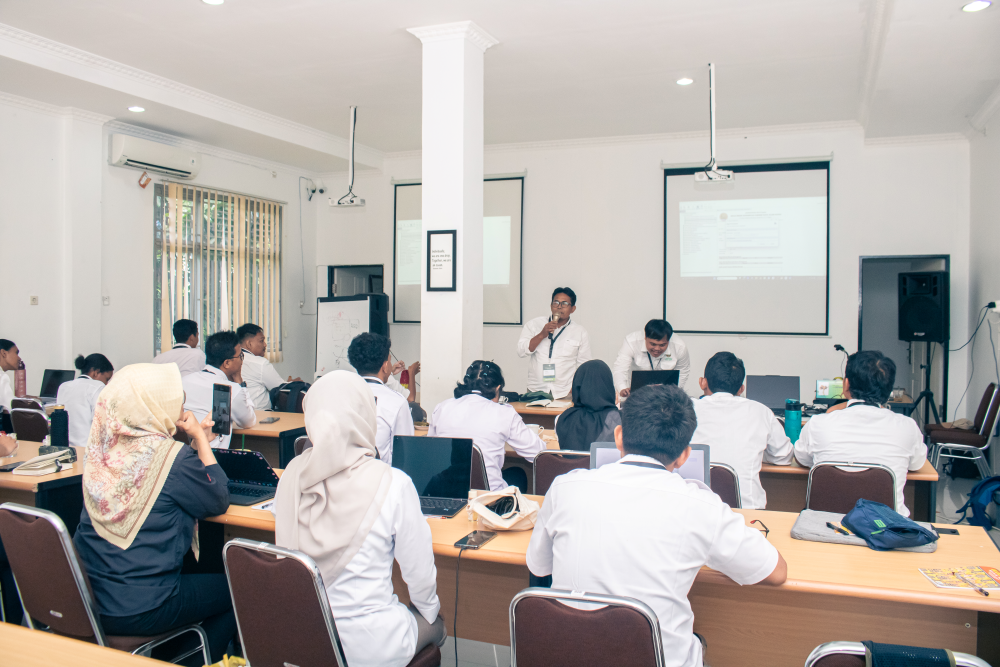
The activity began with a sharing session from BBKSDA Papua that discussed bird survey techniques and the application of Smart Patrol. Next, WWF-Indonesia presented material on the use of Camera Trap and PAM, two approaches that allow wildlife monitoring to be done non-invasively and efficiently.
"KSDA Papua Center has 13 new CPNS, so it is a concern to involve them in this activity, as a briefing before they are deployed to several areas of Sarmi, Biak, Asmat, and Yapen. This activity is also a place to share experiences and knowledge to improve our abilities and capacities. So that hopefully the younger siblings and colleagues who are here can make WWF a place to learn together," said Mr. Danial Idris, a Junior Expert Forest Ecosystem Controller, KSDA Papua Center in his speech.
On the same occasion, Wika Rumbiak, Head of Forest & Wildlife Program Papua said, "It is a happiness to be able to gather with 13 CPNS participants on this occasion to learn together. This is an honor in itself, because we can share knowledge and experience with each other. Hopefully, the learning gained can provide sustainable benefits for all of us. Today marks the first day of our work plan following the PKS with BKSDA in Papua Province. With limited human resources who have in-depth knowledge in this field, we hope to establish closer cooperation with BKSDA, especially in the form of sharing experiences and joint learning.
"Then everything that we learn in this class and in the field can be something good for us to bring and apply in our respective work units, and hopefully we can carry out this collaboration with both nature and humans," continued Mrs. Wika.
After the learning sharing session in the room, the activity continued by going directly to the field. The participants and the team were invited to make observations as well as field practice at one of the Bird of Paradise observation sites, namely Hotep Sawe Suma, which is an assisted area of the WWF Indonesia Papua Program Foundation and is located on the border of Jayapura Regency and Sarmi Regency. The atmosphere felt more alive because this activity was carried out in groups, guided by Kak Beno, Kak Ikhsan and Kak Jacky, and accompanied directly by the owner of the local area Mr. Roby Digan.
During the process of installing and removing Camera Trap and Audiomoth equipment, participants and teams were equipped with how to briefly identify animal and vegetation sounds around the Hotep Sawe Suma forest location using the smart patrol application. In addition, the team also took the time to observe Birds of Paradise in the middle of the Hotep Sawe Suma Forest.
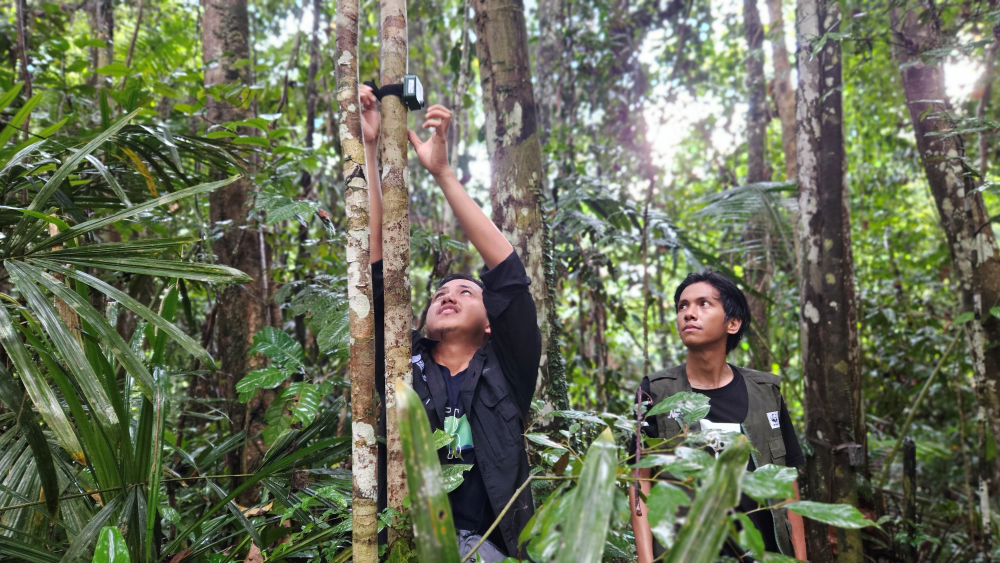
Each group of participants was given the opportunity to install two main tools: Camera Trap and Audiomoth. The results were immediate-bird calls recorded by the Audiomoth and animal sightings caught by the Camera Trap were evidence of the method's success. The data collected was then analyzed using PIE and RStudio applications for images from the Camera Trap, and Arbimont for bird sounds.
In this activity, participants not only collect data. They were also provided with practical knowledge, ranging from how to set up and install the equipment to the technique of removing it safely. In addition, participants also learned to use the Smart Mobile application to support the monitoring process, as well as understand the stages of analyzing data obtained in the field.
Through direct observation in the field, participants not only gained technical skills but also felt close to the nature they were protecting. Amidst the chirping of birds and the shadows of passing animals, the realization grew that technology is not a substitute, but rather a partner in safeguarding Papua's natural heritage.

